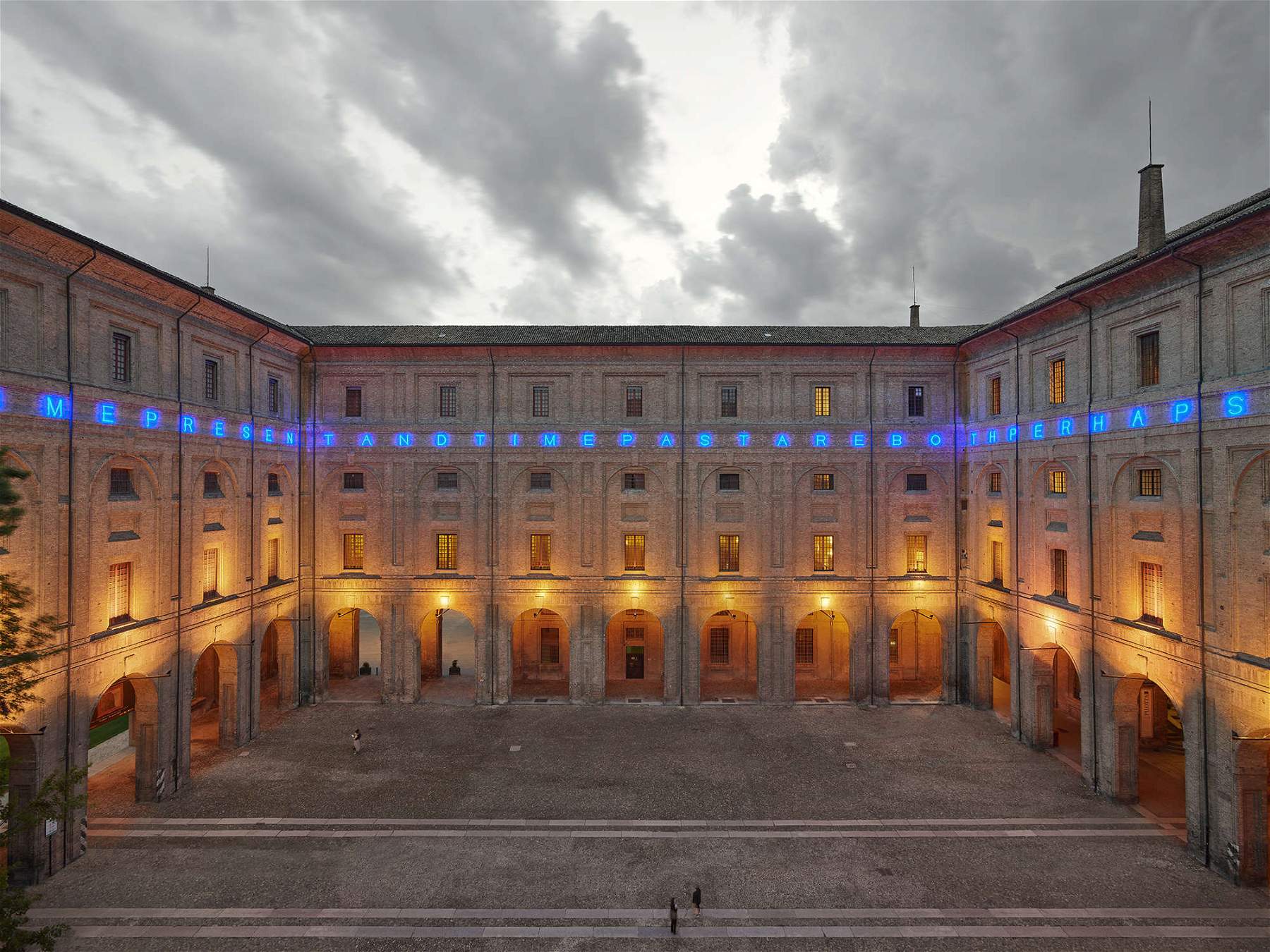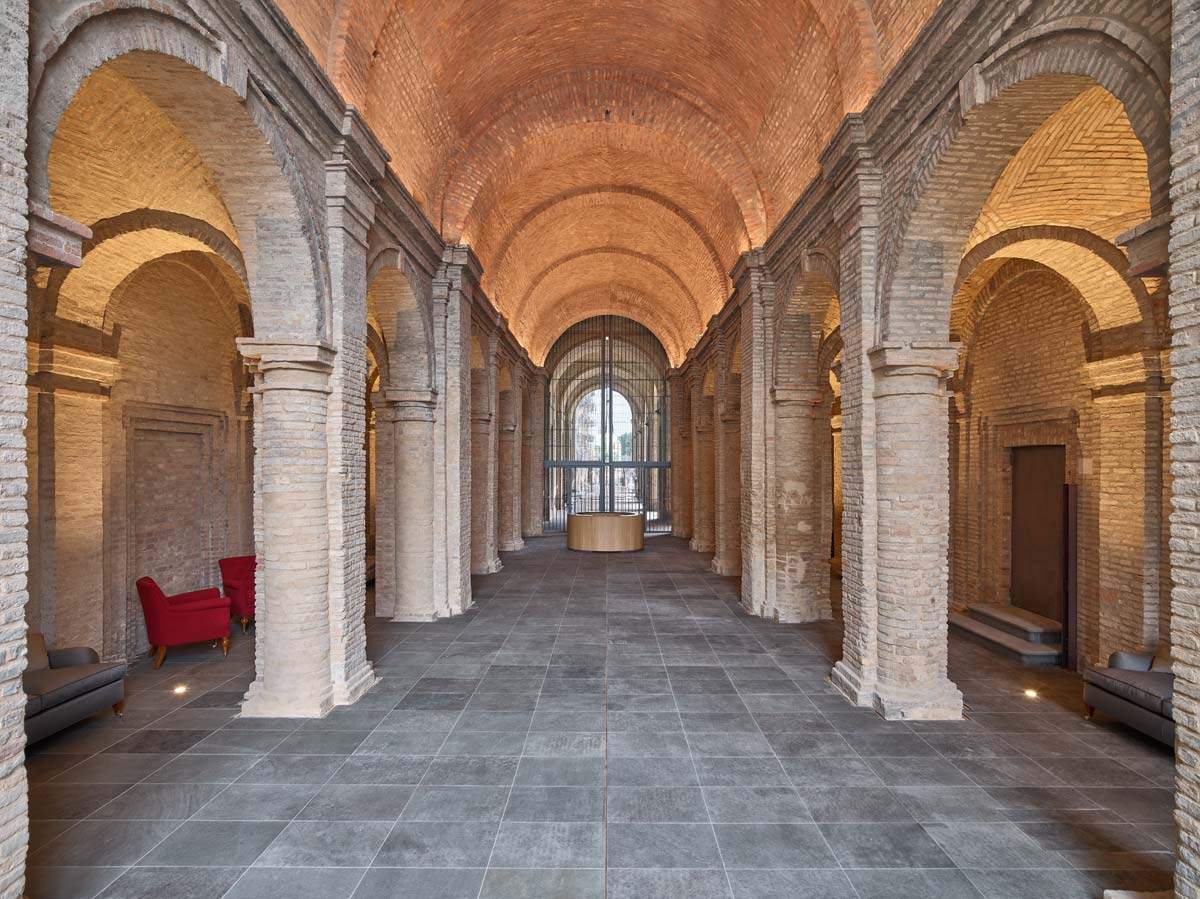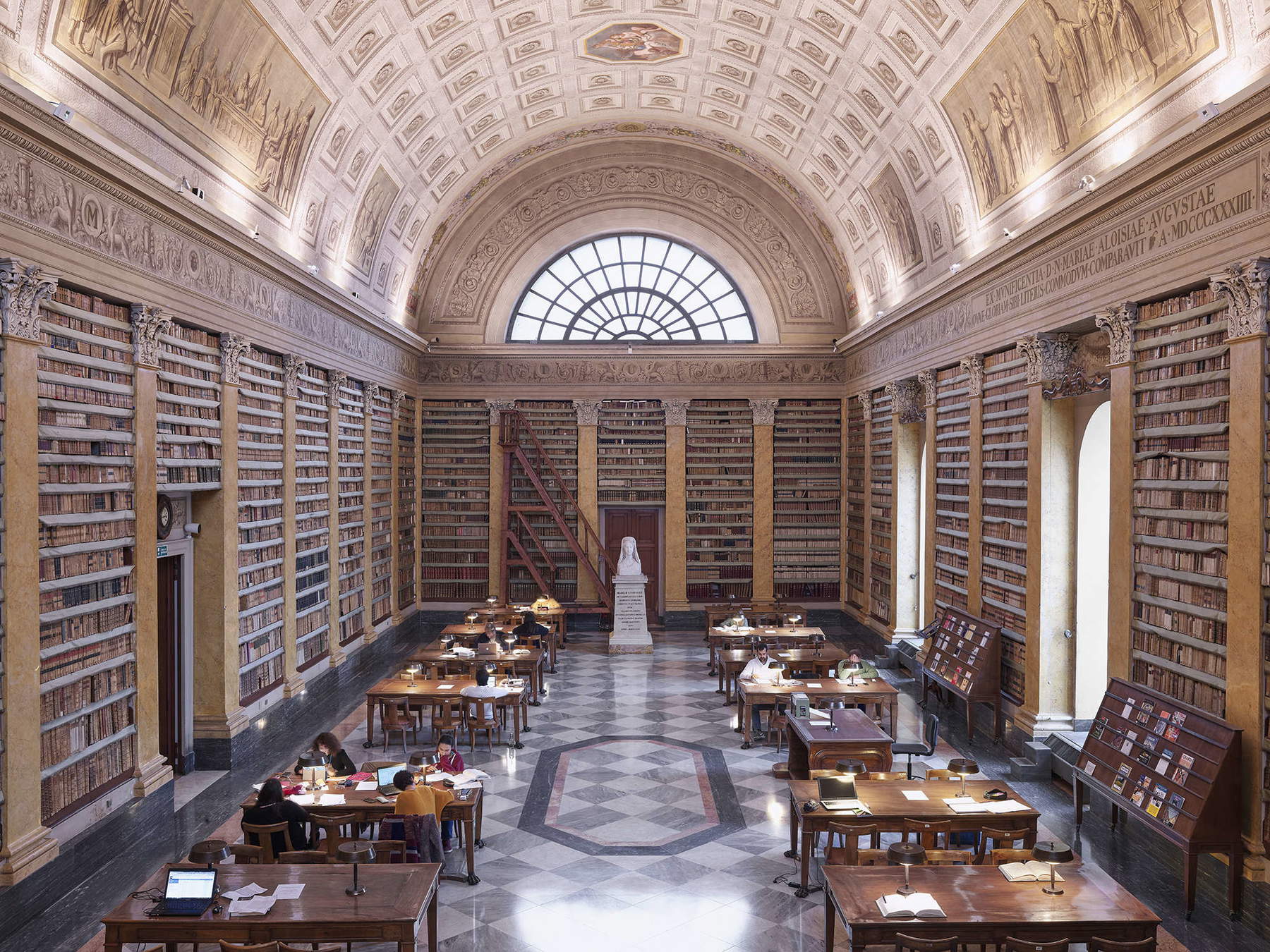In Parma, after six years of work, the project to upgrade and refurbish the exhibition itinerary of the Complesso monumentale della Pilotta ends. Interventions that have taken place over the years and have affected about 30,000 square meters of surfaces with the aim of reconstituting one of the most important Italian concentrations of documents, cultural, artistic and book heritage, bringing together institutes that were born together and dismembered in the 19th century. The interventions, led by director Simone Verde, involved dozens of people, from officials to restorers, from city institutions to sponsors and various professionals, not only from the perspective of art history, but also museology. The Pilotta building is in fact one of the very rare survivals of the experiments that, at the turn of the 16th and 17th centuries, led to the birth of museums as institutions characteristic of modern history.
The Nuova Pilotta represents a general rethinking of Italy’s only public encyclopedic museum with the aim of enabling it to serve as an instrument of intellectual analysis, useful to contemporary society. The last piece of this mosaic is the opening of the archaeological section, completely rethought and upgraded following the most innovative principles of scientific research, which include references to the acquisitions of New Archaeology, Global History, Connected History and even the so-called Big History. The Pilotta thus becomes walkable again in its entirety.
One of the main features of the operation was to rehabilitate those connective spaces such as the monumental staircase, the vestibule of the theater, and theexternal area of the courtyards that were in a condition of deep degradation and whose function was limited to easements of passage; likewise, a further action involved places such as the Gallery and the Archaeological Museum that had long remained separate organs, disconnected from the body of the building and its unitary collecting history. A major part of the work focused on the former National Gallery of Parma, which needed work on securing and restoring the works. The work also included routine maintenance work, such as plaster restoration, scientific rethinking of the museological principals, and technological equipment, including energy saving. Once the envelope was completed, we moved on to reconsider the layout in terms of conceptual reflection of the collections, including the legibility of the works. One example of what was accomplished was the recent reopening (with refitting) of the Upper North Wing with seven new rooms dedicated to the most significant exponents of Emilian art between the 16th and early 17th centuries, to establish a direct link with the chronological development of the works from the Flemish to the art of Mannerism in Parma. Then the rooms of the lower North Wing, or the Passerella Farnese, a viaticum to the halls of ducal portraiture, with a new display of the rich heritage of Renaissance medals and coins and printed volumes.










The Teatro Farnese, a masterpiece from 1618 and the first modern theater in European history, has undergone a long and elaborate cycle of interventions of various types, from routine and extraordinary maintenance to the musealization of spaces previously closed to the public. This is the case with the areas of the subgradinate, formerly used as passageways or as warehouses cluttered with disused goods, and now transformed into museum areas thanks to the major reclamation work. For its part, the theater continues in its original role of hosting performances and concerts, such as the first edition of the Farnese Festival, the world’s only musical review of the 17th and 18th centuries, curated by Fabio Biondi and conceived by Simone Verde, which can boast of a performance hall coeval to the proposed repertoire, on whose stage some of Italy’s most prestigious ensembles have taken turns.
To make the audience aware of the extraordinary importance of the theater, to invite them to rediscover the original appearance and use of the hall that was severely damaged by World War II bombings and rebuilt during the 1950s, a a videomapping was produced that, through the use of projections, sounds and moving images that made use of original stage sets, recreates and brings back to the stage that machine of theatrical illusion where some of the ideas and stage experiments of modern theater were first realized.
Not to be forgotten is the Palatine Library, which has entered the Monumental Complex’s roster of institutions with its unique collection of drawings and prints, its sumptuous rooms, and its unparalleled endowment of library holdings and documents, including one of the most important collections in the world of Hebrew manuscripts and printed books, second in quality and quantity to that of the Jerusalem library and originating from the library of Abbot Giovanni Bernardo De Rossi, who taught Oriental languages in the theological faculty of the University of Parma from 1769 to 1821.
A new face has also been designed for the Bodonian Museum, the first and only one of its kind in Italy, created in 1963 from a series of valuable donations. The collection was in fact found another destination, on the ground floor of the Complex, characterized by an Empire-style aesthetic, coeval with the last years of the printer’s activity. The tour displays the entire collection of original punches and printed matter, with the opportunity to view replicas of original presses and take advantage of digital aids such as an interactive table and four totems.










With a view to making the New Pilotta a place where to meet the needs of an increasingly broader public and allow it a more convenient and comfortable fruition, work has also been done on services, which contribute to make the experience of visiting complete and, at the same time, to attract visitors through an offer close to the ordinary forms of contemporary life. In this direction, the large multimedia and interactive table was created at the entrance to the West Wing, which introduces the sections devoted to the history of Italian art in Parma’s collections through which it is possible to operate a search by work or author that facilitates their location, knowledge of their collecting history, and in-depth study of their provenance, technical details and various monographic curiosities.
From the indispensable facilities for a museum, such as the completely redesigned areas of the ticket office, the checkroom, the new block of toilets and nursery room, the refreshment area with seating and vending machines, entirely rearranged to restore an environment previously used as a storage area, or even the Paciaudi Room of the Palatina Library, rededicated to the community of Parma, the new management then worked on the outdoor areas, such as the Cortile della Cavallerizza, transformed into a garden periodically open to the public and housing the headquarters of the Friends of the Pilotta Association.
In six years, redevelopment and maintenance involved about 30,000 square meters, at a cost of €22,399,500.00. The restorations involved 62 works from the National Gallery, 102 frames, 185 manuscripts and volumes from the Palatine Library, and 550 archaeological finds. Audiences increased from 120,042 visitors in 2017 to 132,910 in 2022 and 144,882 as of October 31, 2023 (also a record figure in relation to the pre-pandemic) with a projection of about 170,124 visitors as of December 31, 2023; consequently, ticket receipts increased from 476,116.00 in 2017 to 705,101.10 in 2022. As for social, from 2017 to July 7, 2023, the increase in followers of its Facebook, Twitter, and Instagram pages increased from 3,976 to 18,678, from 2,640 to 3,257, and from 2,509 to 13, respectively.600; so, too, the website - complexopilotta.it - saw a growth in unique users from 1,467 to 208,456 and page views from 268,658 to 1,357,558 with the monthly average varying from 24,423 to 35,726.
As for future projects, there will be some works involving the courtyard of St. Peter Martyr and the creation, thanks to funding from the PNRR, of a new single elevator for the entire Complex with attached ticketing and public reception services. The courtyard of San Pietro Martire or the Pilotta, originally for the exclusive use of the courtyard and since 1865 open to the city, will be the subject of an extensive restoration project that will allow for the philological recomposition of the fragmentary framework of the pavement, proceeding to an integrated approach of preventive conservation and allowing for an easier passage of the disabled and an enhancement of this important urban area. The valuable 19th-century aesthetics of the vaults will thus be extended to the areas affected by the arcade. An illustrative panel accompanied by historical images will allow better accessibility for all citizens and visitors passing through the Pilotta courtyard. To date, the building has no elevators for direct access for disabled visitors to the three main cultural institutions: the Archaeological Museum, the National Gallery, and the Palatine Library. The five existing vertical mechanical links serve individual blocks of the building and take users to secondary access points of the building, not allowing direct access to the main atrium overlooked by the above three institutions. In view of the need to provide the museum and scientific offerings with all those services that every public and civic place should guarantee with a view to expanded accessibility to all categories of the public for the removal of physical and cognitive barriers in accordance with the provisions of Measure 1.2 of the PNRR, the Nuova Pilotta intends to build a new block of elevators located in the cavity by the grand staircase. This corner of the building would allow the cabin to rise from the underground underpass connecting with the reception hall up to the second floor to the hall known as the hall of Maria Luigia, not altering the building’s exterior elevations in any way. The project also includes the enhancement of the spaces of the underpass, the creation of a new ticket office, a walkway walkway, a system of stair ramps, and the closure of the cavern with a steel and glass skylight. From this renewed context of the semi-public space, it will be possible for all users to directly reach both the first level of the Palace where the Archaeological Museum is located and the large vestibule of the second level overlooked by the Teatro Farnese, the starting point of the new route for visiting the entire Complex, including the National Gallery and the entrance to the Palatine Library’s musealized area.
“The New Pilotta of Parma,” says Culture Minister Gennaro Sangiuliano, “is revealed to the public today in all its splendor. An extraordinary monument and one of a kind in Italy is thus restored to its original meaning as an all-round museum, in which every creative expression is represented: from the figurative arts in the National Gallery to printing with the precious testimonies of the Bodoniano Museum, from performing arts in the Farnese Theater to the book collections of the Palatina Library, the priceless cultural heritage housed in this museum finally has full dignity and rightful appreciation. If there was needed evidence of how much autonomy for state museums was needed, the Nuova Pilotta certainly stands as a candidate to be among the clearest and brightest.”
“The Institute’s renovation and refurbishment project,” says director Simone Verde, “involved about 30.000 square meters of the Farnese building with works and maintenance, creation of new exhibition rooms, realization of numerous restorations and definition of new mediation tools - including a spectacular videomapping that from June 2023 returns the image of the original scenic machine of the Teatro Farnese - allowing to rediscover the original optics with which the collections were constituted over time, as well as the collecting history and the close link between content and monumental container that characterizes them. The New Pilotta thus constitutes a strategic accomplishment for the city of Parma, which once again takes possession of an entirely renovated and refurbished museum heritage that is among the most important in Europe, and which will contribute to inserting the Complex and its territory into a network of international relations full of new opportunities.”
 |
| Parma, redevelopment work on the Complesso della Pilotta ends |
Warning: the translation into English of the original Italian article was created using automatic tools. We undertake to review all articles, but we do not guarantee the total absence of inaccuracies in the translation due to the program. You can find the original by clicking on the ITA button. If you find any mistake,please contact us.